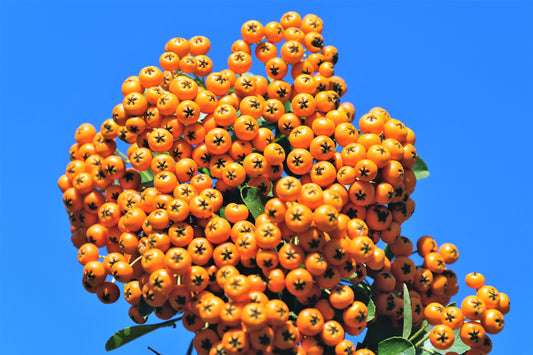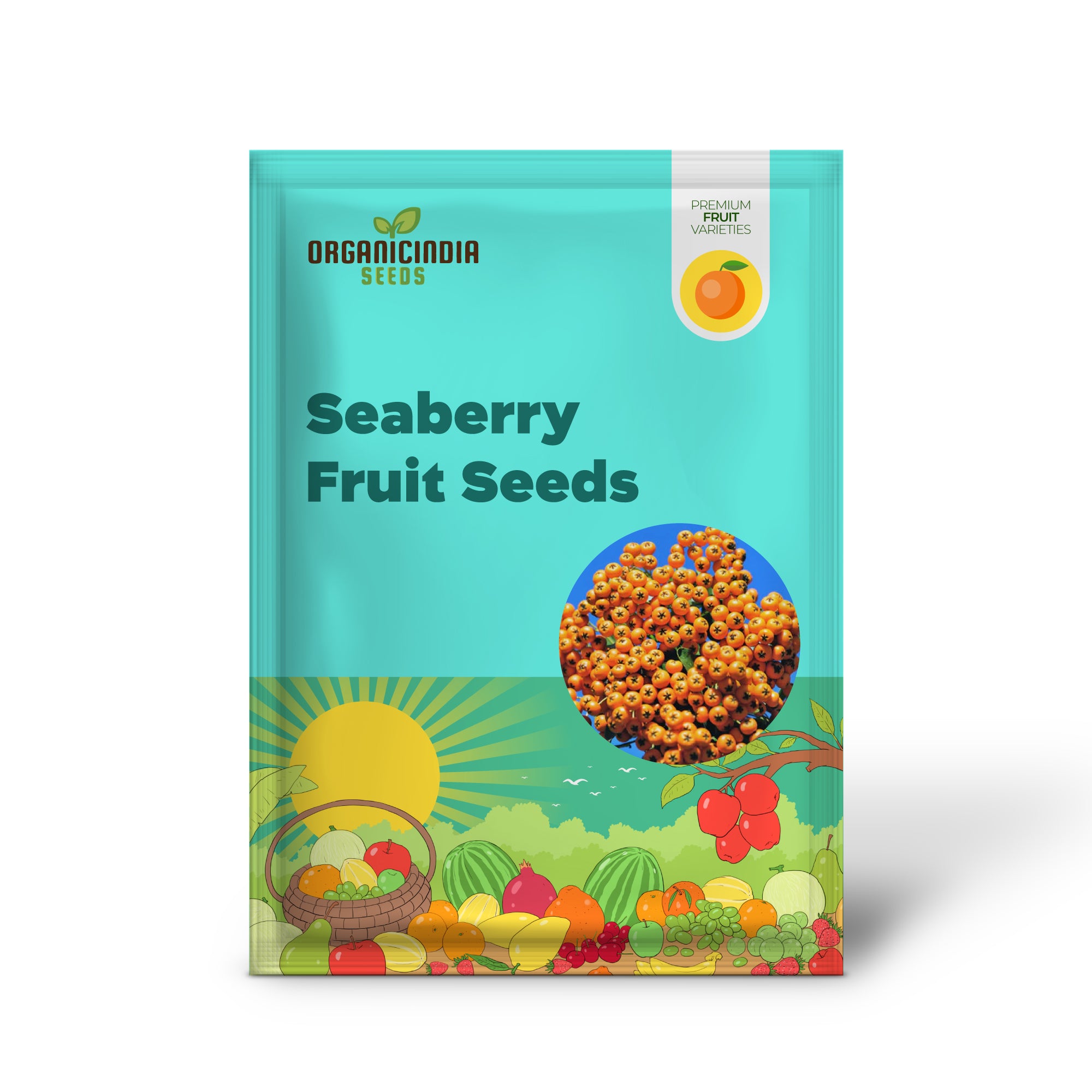



Free Shipping
Safe & Secure Payments
Seaberry, also known as Sea Buckthorn (Elaeagnus hippophae), is a hardy, deciduous shrub that is widely appreciated for its vibrant orange berries, which are packed with nutrients and antioxidants. This shrub is native to Europe and Asia, where it thrives in coastal regions and poor soils, making it highly resilient and adaptable to different growing conditions. The bright yellow flowers of Seaberry appear in spring, followed by clusters of small, tangy orange berries in late summer, which are often used in juices, jams, and skincare products. The shrub’s striking silver-green foliage and ability to grow in challenging environments make it a popular choice for gardens, as well as for erosion control and habitat restoration projects.
Key Features:
Growing Information:
Light:
Seaberry shrubs thrive in full sun but can tolerate partial shade. For optimal berry production and overall plant health, ensure that the shrub receives at least 6 hours of direct sunlight each day.
Soil:
Sea Buckthorn is exceptionally adaptable to a variety of soil types, including poor, sandy, and rocky soils. It thrives in slightly alkaline to neutral soils with good drainage but can also tolerate mildly acidic soils. Ensure the soil is well-draining to prevent root rot, as Sea Buckthorn does not like to sit in waterlogged conditions.
Planting Tips:
Plant Seaberry seeds indoors or in a greenhouse for early germination. Stratify the seeds by placing them in the refrigerator for 30 days before planting to simulate the cold conditions they would naturally experience. Sow the seeds about 1/4 inch deep in a well-draining seed-starting mix and keep them in a warm (65-70°F or 18-21°C) environment. Once the seedlings are large enough and outdoor temperatures are consistently above freezing, transplant them into the garden. Be sure to space the plants 6-10 feet apart to allow for their full growth potential, as Sea Buckthorn can spread quite wide.
Watering:
While Sea Buckthorn is drought-tolerant once established, it benefits from regular watering, especially in the first few years of growth. Water the plant thoroughly, but ensure the soil is well-draining to avoid waterlogging. Once the shrub is mature, it can survive in periods of drought, but it will yield better fruit production with occasional watering during dry spells.
Benefits:
Growing Zones:
Sea Buckthorn (Elaeagnus hippophae) is hardy in USDA Zones 3-7. This makes it suitable for a wide range of climates, from colder northern regions to more temperate zones. It is ideal for areas with cold winters and hot summers, as it can tolerate extreme temperature fluctuations and drought conditions.
How to Use in the Garden:
Conclusion:
Seaberry (Sea Buckthorn) is a highly versatile and hardy shrub that offers numerous benefits for gardeners. With its nutrient-packed orange berries, vibrant yellow flowers, and silvery foliage, it serves as both an ornamental and edible plant. Sea Buckthorn is perfect for gardeners in need of a low-maintenance, resilient plant that can thrive in poor soils and extreme conditions, while also supporting wildlife and improving soil health. Whether you are growing it for its medicinal berries, its beautiful flowers, or its environmental benefits, Sea Buckthorn is sure to be a valuable addition to your garden or landscape.
Choose options

